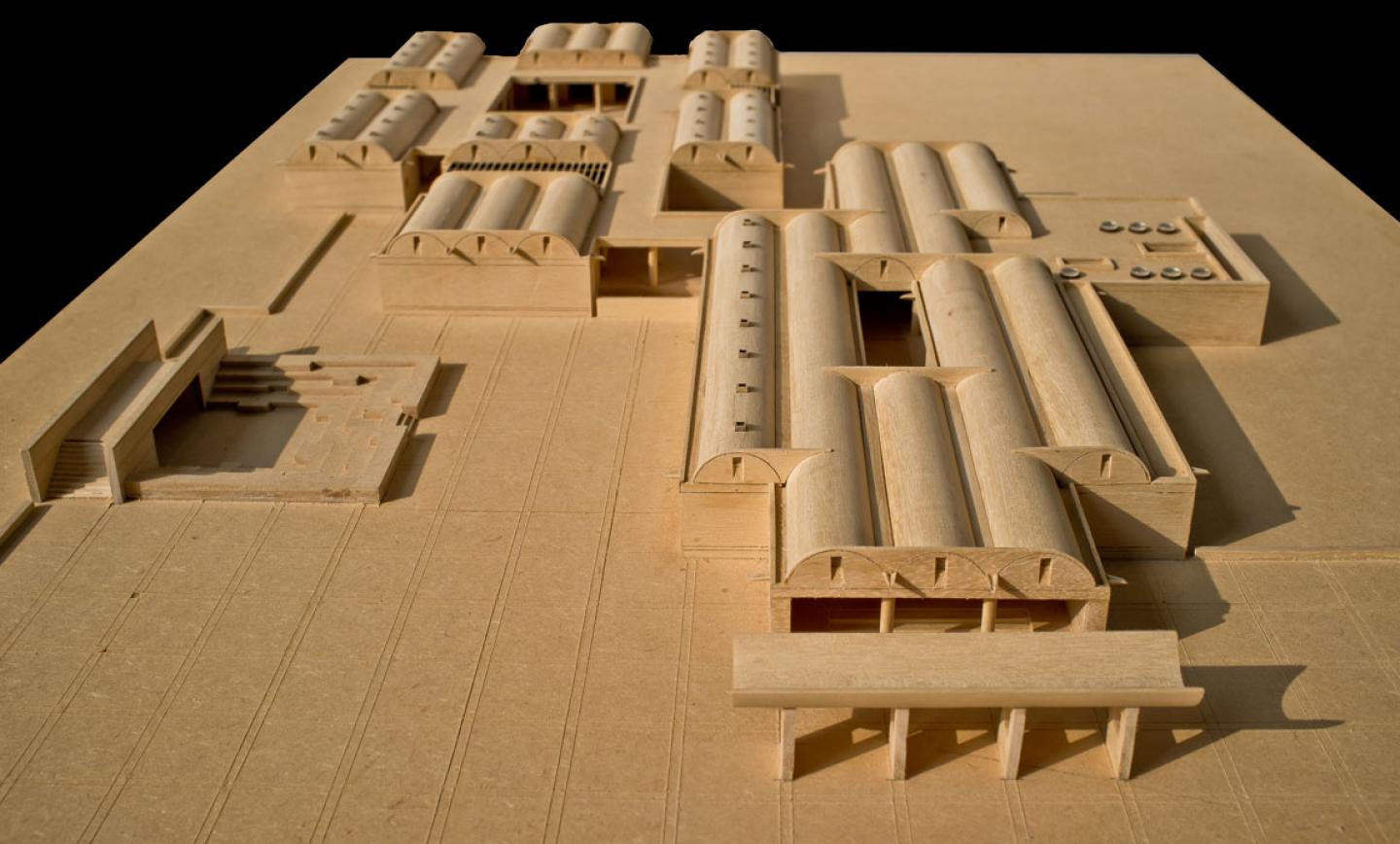The Bajaj Science Centre is an educational facility situated on the urban periphery of Wardha town, a growing service centre of about a hundred thousand people, whose nearby villages house an equal population. The science centre was created to ameliorate a total lack of appropriate science education in the Wardha District of one million people. The culture is one of simplicity, natural and honest expressions and empiricism, which are expressed in the architecture. The centre is composed of an Exhibition Space; an Auditorium; a Library; a Classroom; a Darkroom; a Physics Laboratory; a Chemistry Laboratory; a Biology Laboratory; an Applied Science Laboratory and offices. There are open to sky courtyards for learning and sharing ideas. This complex of 3300 Square Meters includes an outdoor gathering space that accommodates 300 people for public programmes and a general library for the public created from a refurbished bungalow, belonging to the Jamanalal Baja family. The small complex is made from local burnt brick and arched ceilings, with no external plaster or paint. Local Shahabad stone is used in courtyards and inexpensive Kota stone for interior flooring.
Located in the geographic centre of India, Mahatma Gandhi settled nearby in Sevagram Ashram from 1936 until he was assassinated in 1948. The area has a deep history of rulers from the Delhi Sultanate and Maratha Kings and the city is interspersed with mosques, temples, gurudwaras, churches and viharas. The district is famous for social work due to the generosity of the Jamanalal Bajaj family through generations over the past century, and the numerous institutions that have emerged under their guidance and patronage, including the Mahatma Gandhi Institute of Medical Sciences, and numerous schools and colleges.
Though there are numerous schools within the Wardha District it was found that few had operable science teaching laboratories and that the teacher capability was low. On the other hand youngsters yearned for better knowledge in the sciences that would afford them a more satisfying life and employment opportunities. Located in a drought prone area, education has proven an escape from poverty and degradation, and here the science centre plays a unique role, serving as a national educational model. Created in 2008, the Science Centre reaches students from 26 schools within its nearby catchment area and, spreads out to schools in an area of about twenty kilometers distance. The centre has about five hundred students, who come voluntarily to learn science in a student friendly, non-obtrusive manner, between 2:30 PM on into the night. Morning hours are spent by the centres faculties mentoring in nearby schools and in the training of trainers. The students are roughly equally balanced between boys and girls, and represent all the diverse communities that emerged here over the centuries. Forty percent of the students obtain a fee waver of the $2.25 monthly fee, merely upon request. Others pay voluntarily according to their ability. 1160 candidates appeared for the entrance test for two hundred seats in 2012, and the strategy now is to expand the capacity and concentrate on the teaching of teachers and enhancement of school laboratories in the area.
In recent years eight to ten students from the centre qualified for national science awards, and in the past three years five students have won national level awards in All-India competition. The presence of the science centre has encouraged schools in the region to enhance their own facilities and their teacher’s capabilities, having a multiplier effect. The centre’s outreach programmes and teacher-training activities have had a significant impact on science education in this poverty stricken region.
2008
2010
Built Up Area: 3,065 Square Meter
Site Area: 9 Acres
Daraius Choksi, Rahul Sathe, Chhavi Lal, Bhushan Pise










